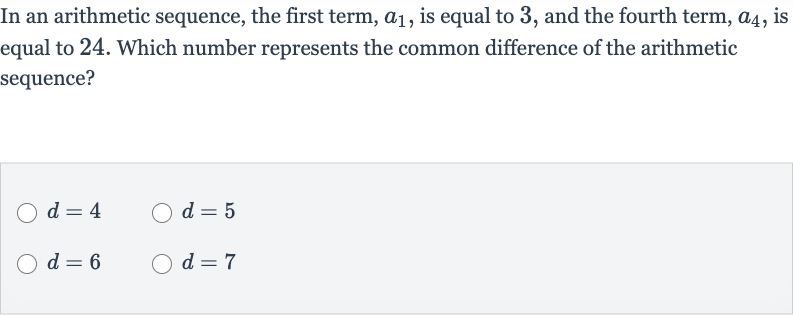Full solution
Q. In an arithmetic sequence, the first term, , is equal to , and the fourth term, , is equal to . Which number represents the common difference of the arithmetic sequence?
- Given terms: We are given the first term of the arithmetic sequence is and the fourth term is . The common difference can be found by using the formula for the nth term of an arithmetic sequence, which is . We can set up the equation for the fourth term.
- Set up equation: Substitute the known values into the formula to find the common difference. We have , , and . So, .
- Simplify equation: Simplify the equation: . Subtract from both sides to isolate the term with : .
- Isolate term: Perform the subtraction: . Now, divide both sides by to solve for : .
- Calculate common difference: Calculate the division: . So, the common difference of the arithmetic sequence is .

